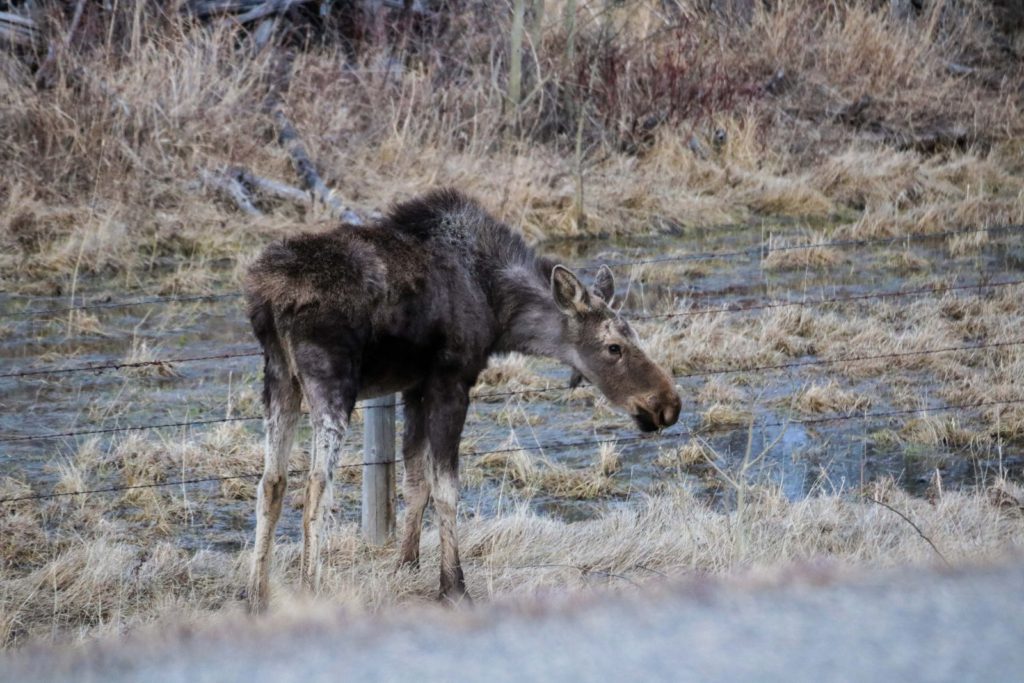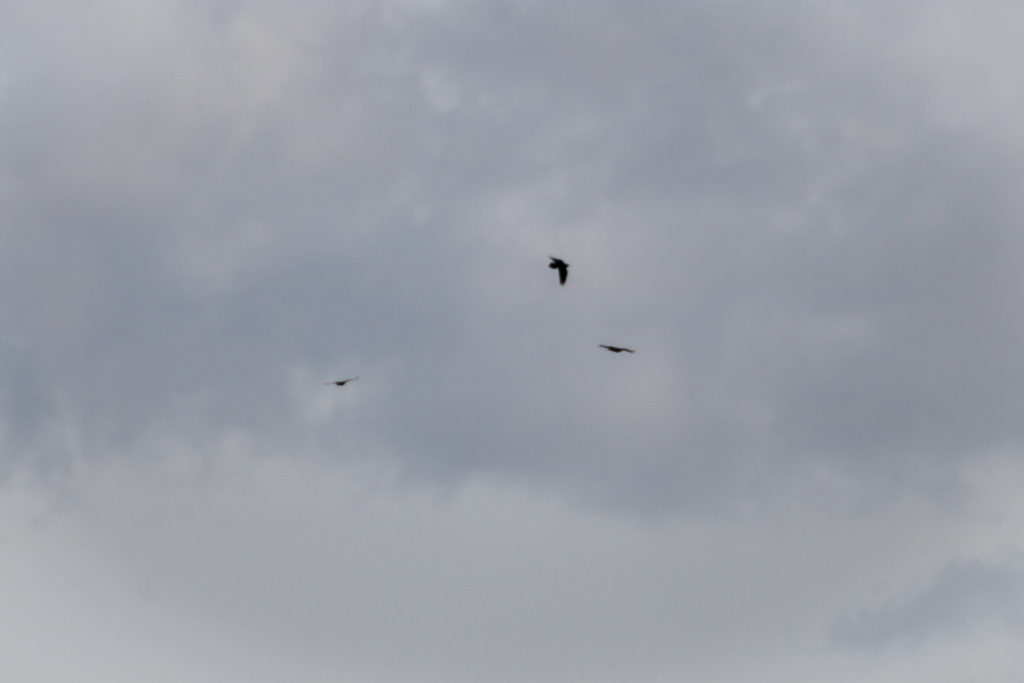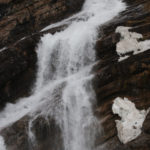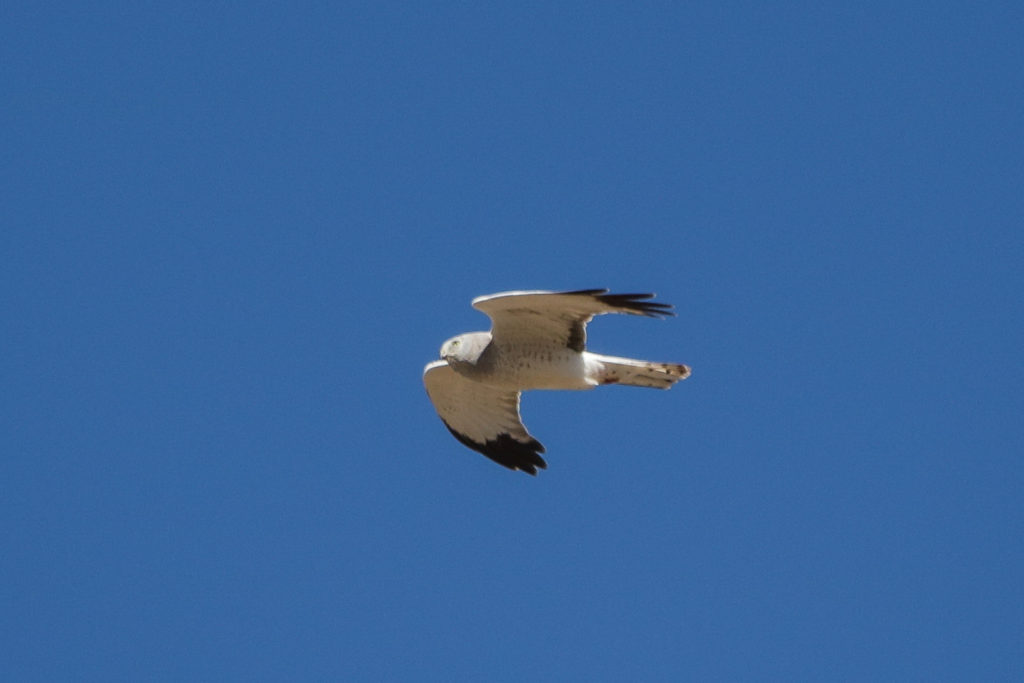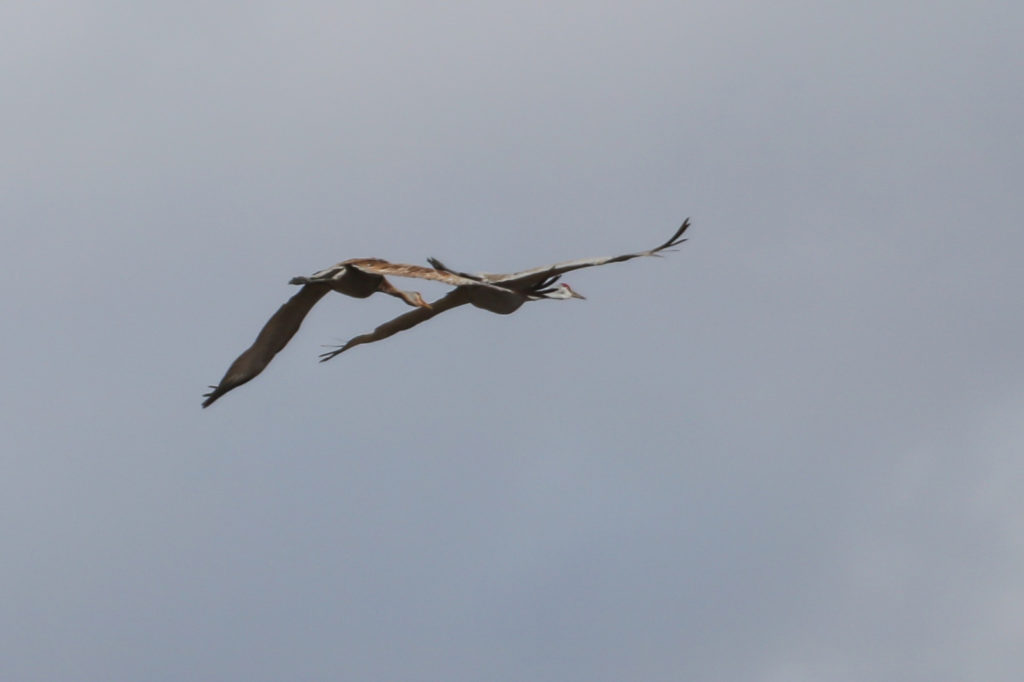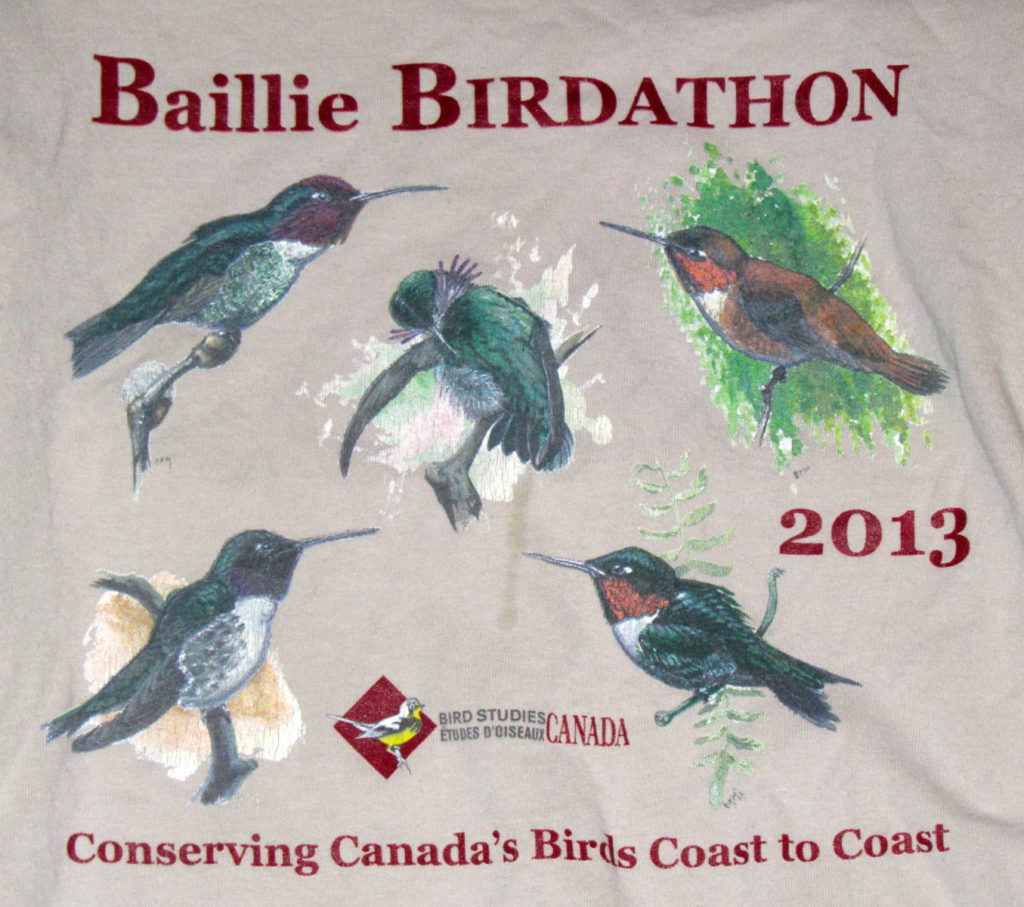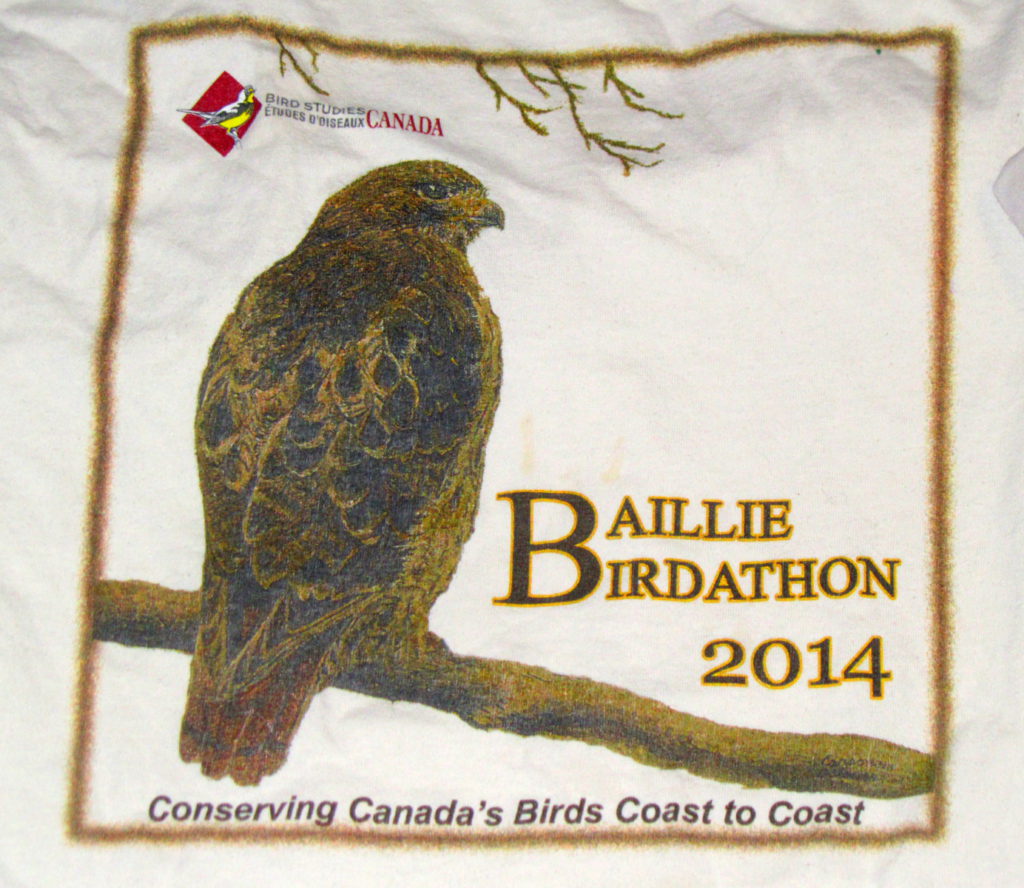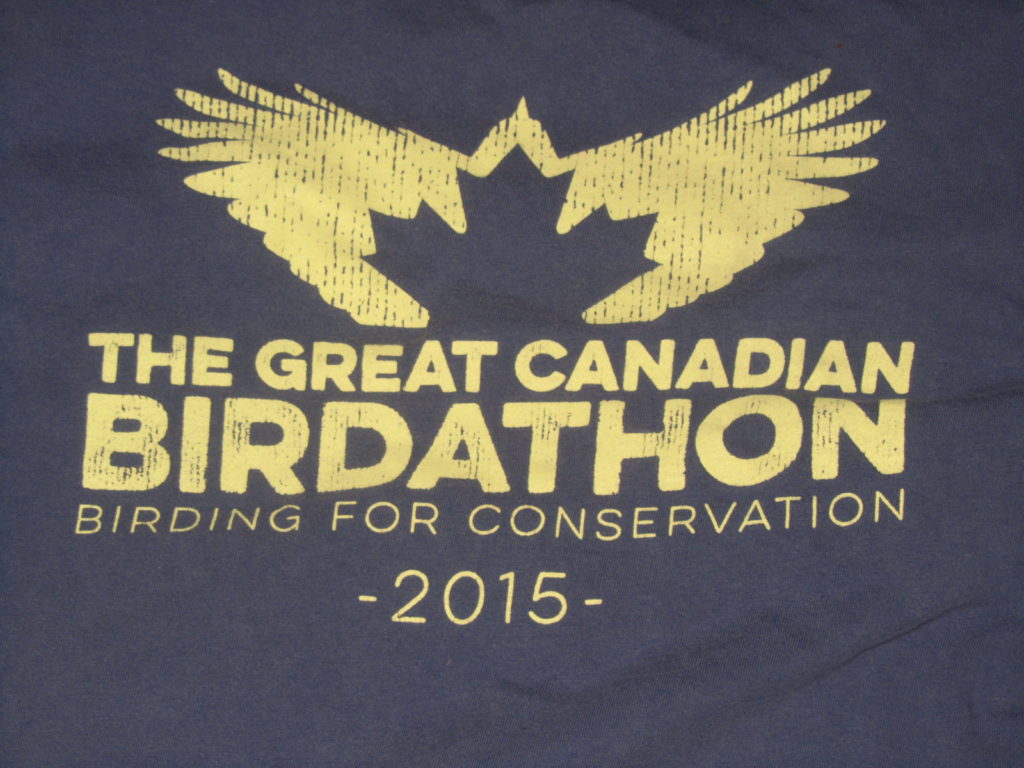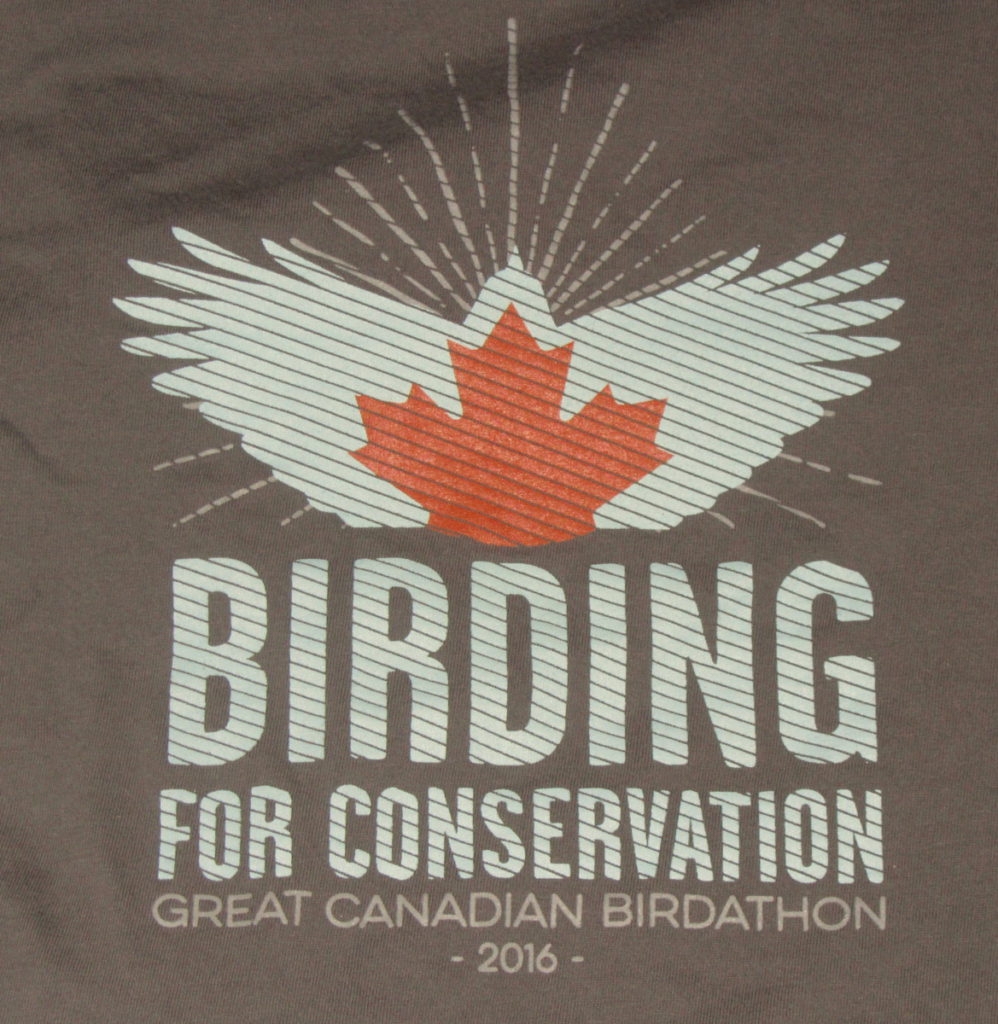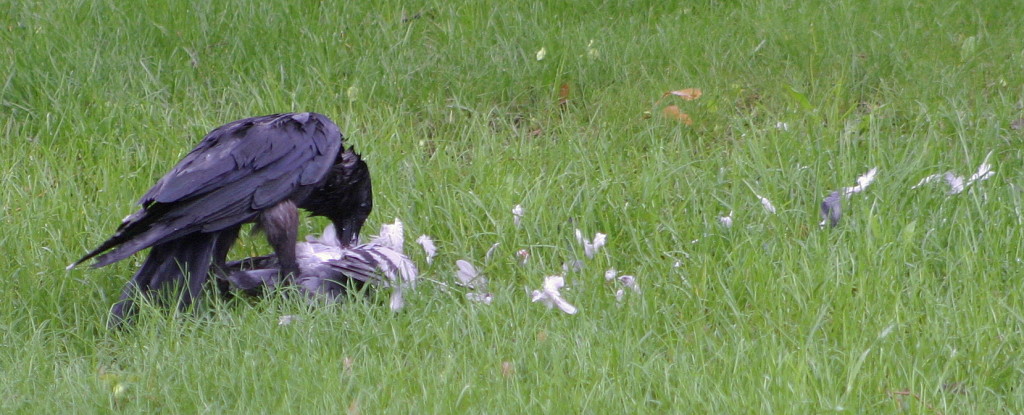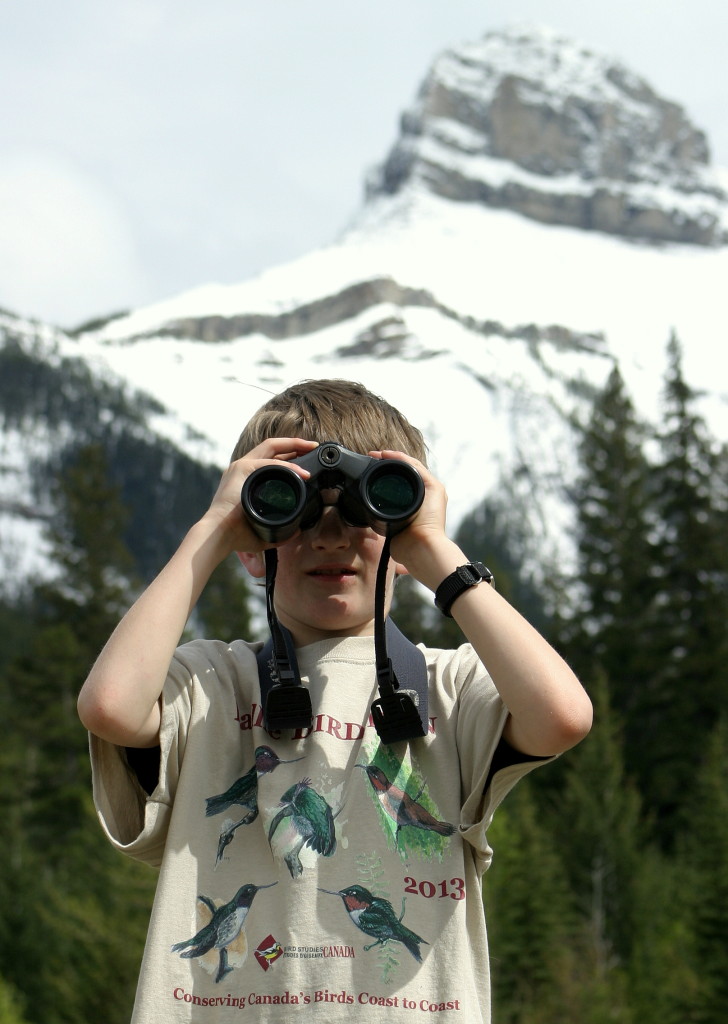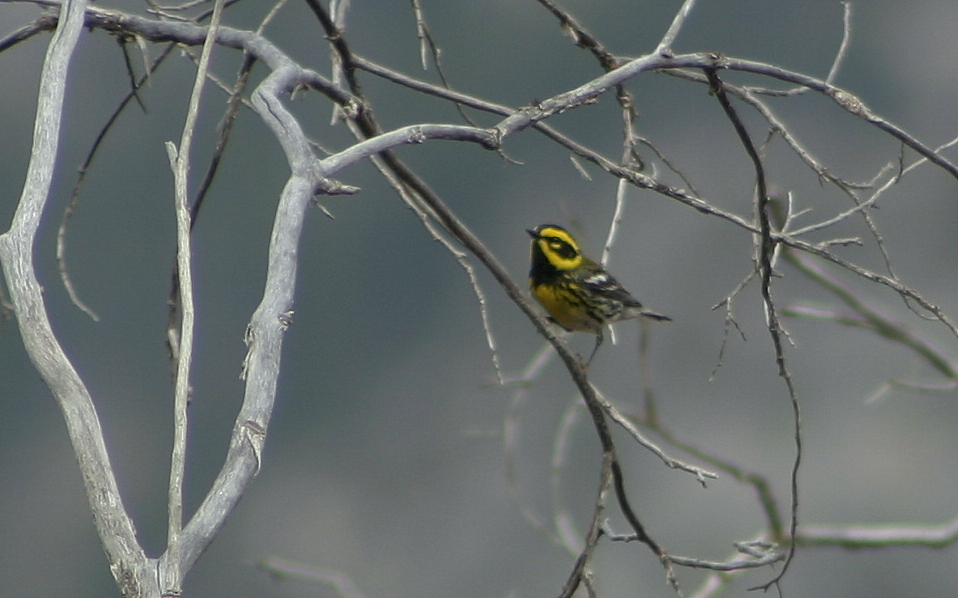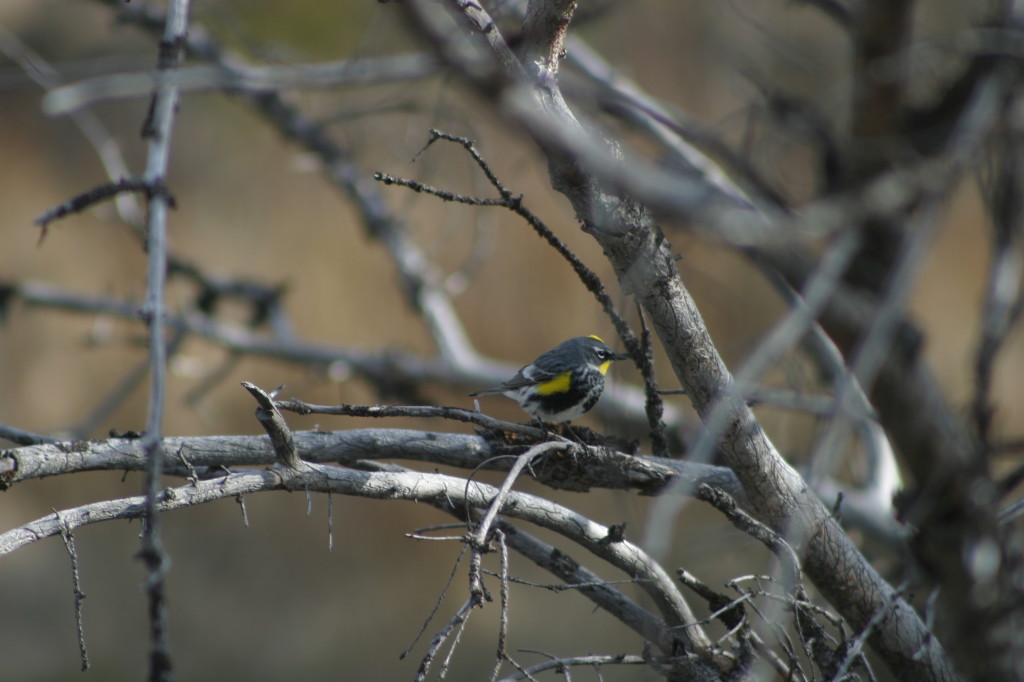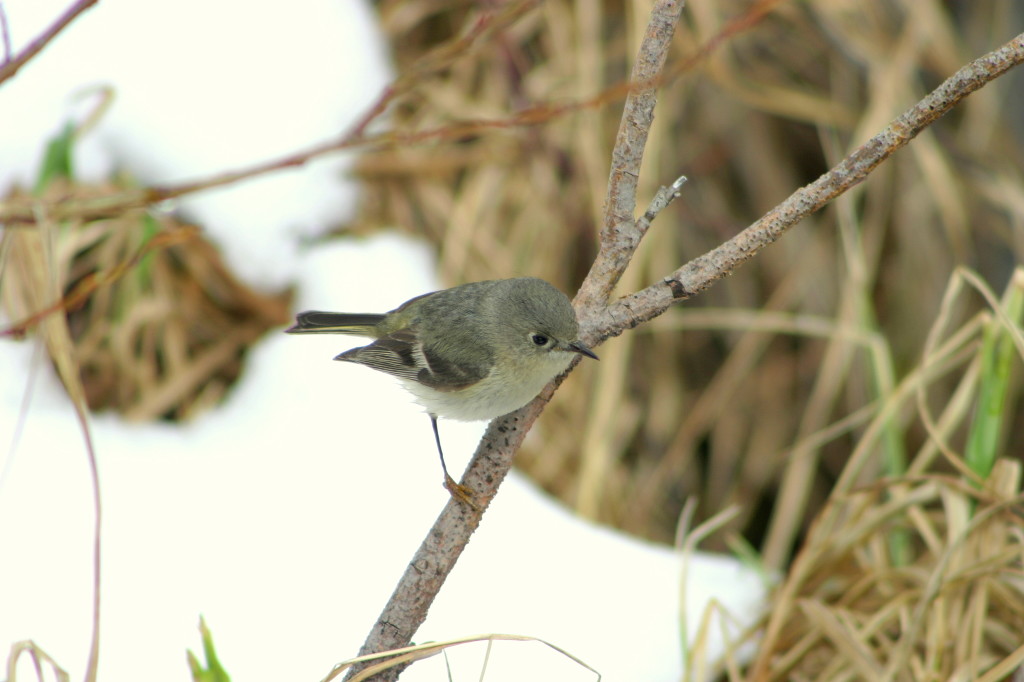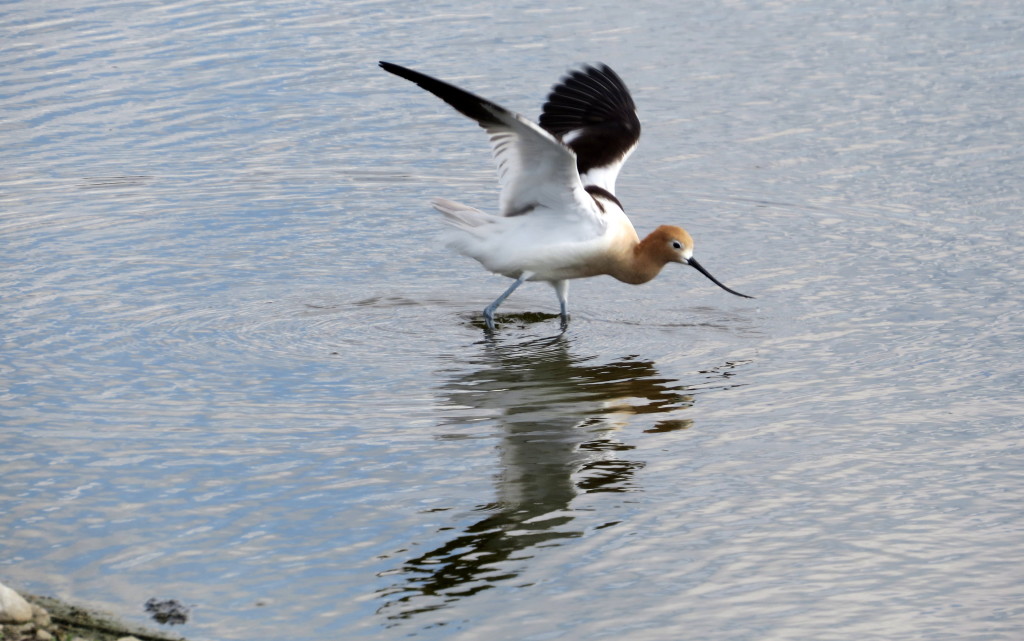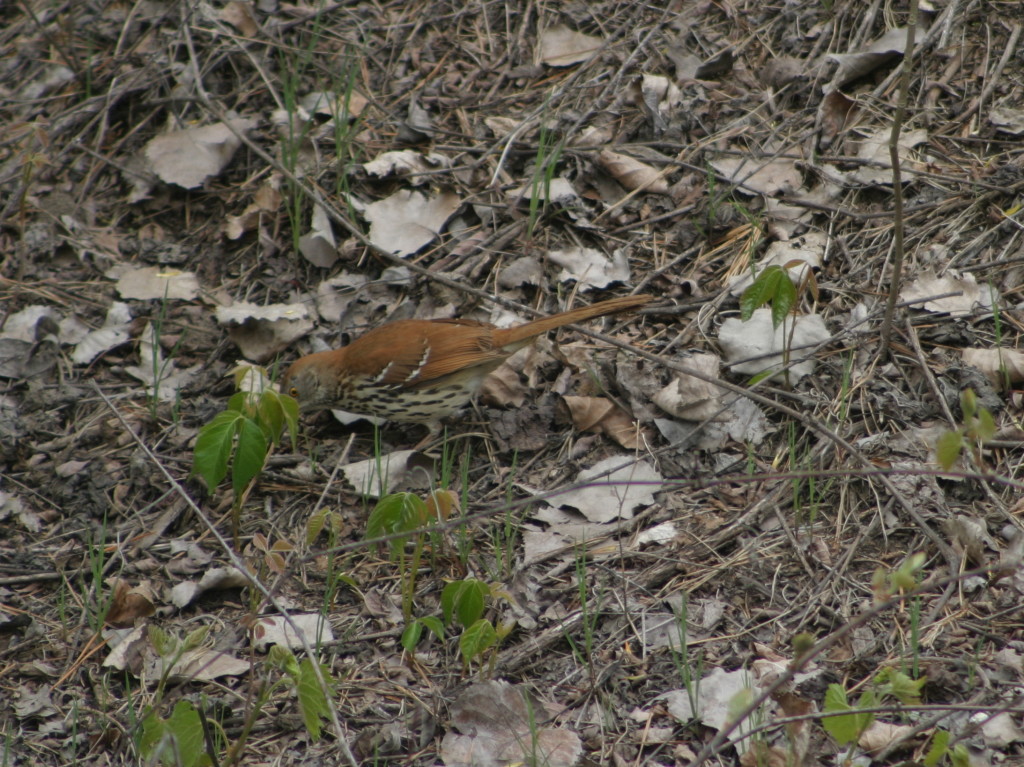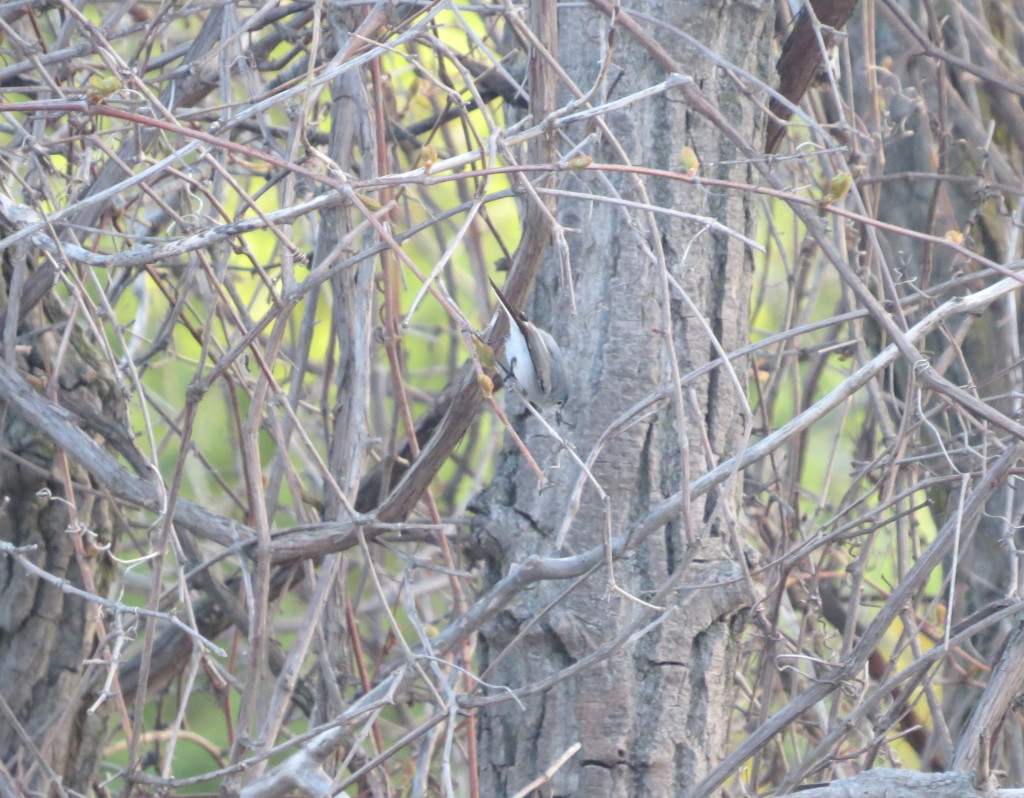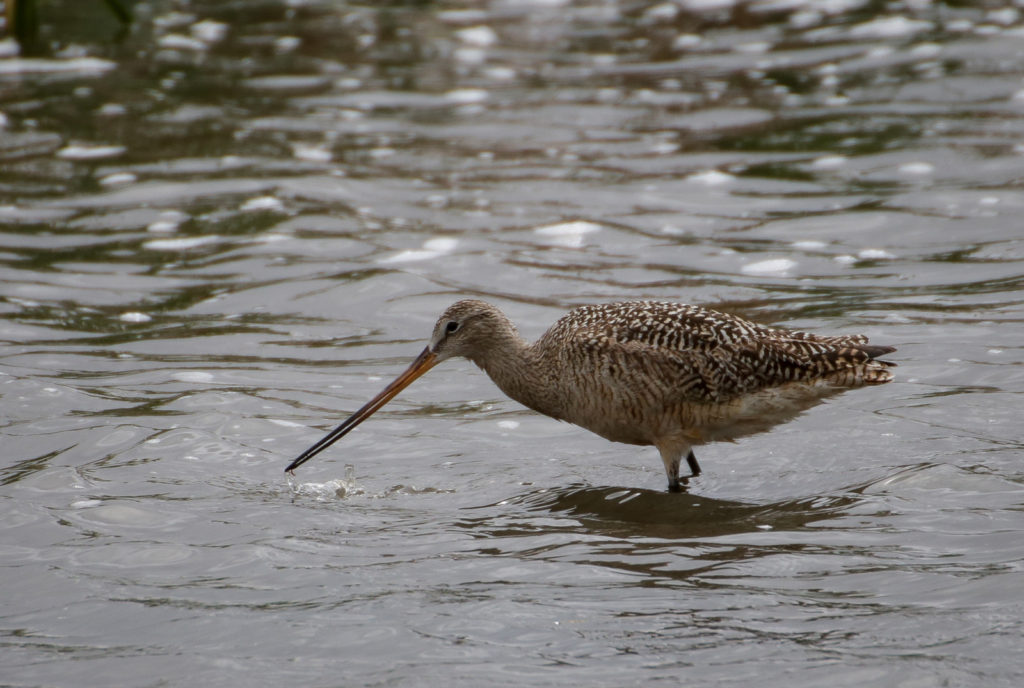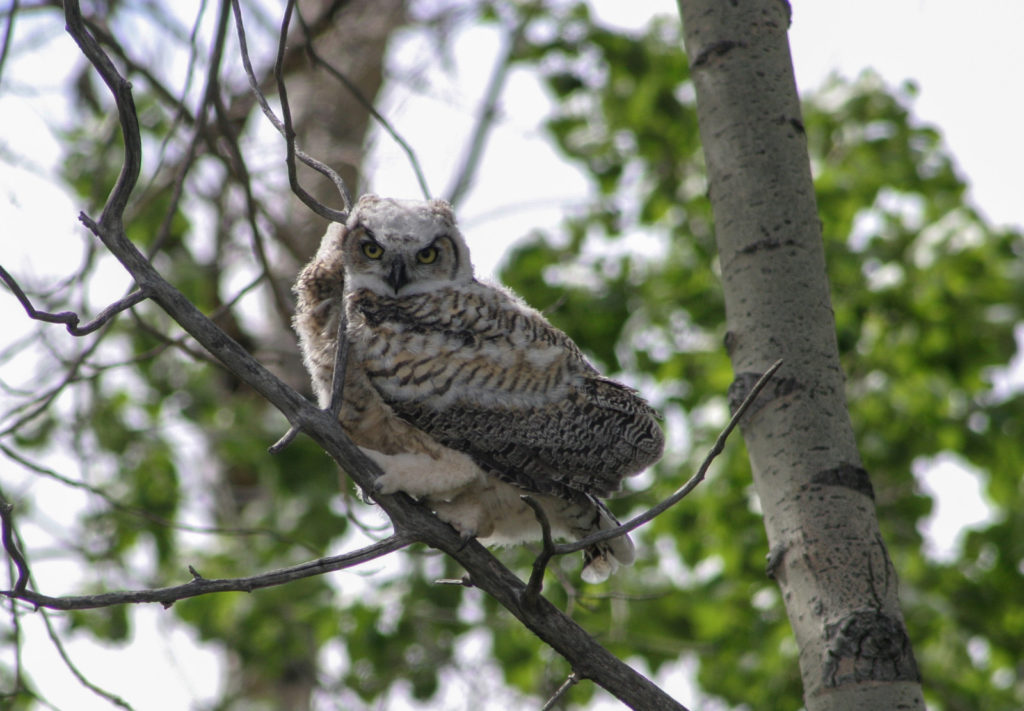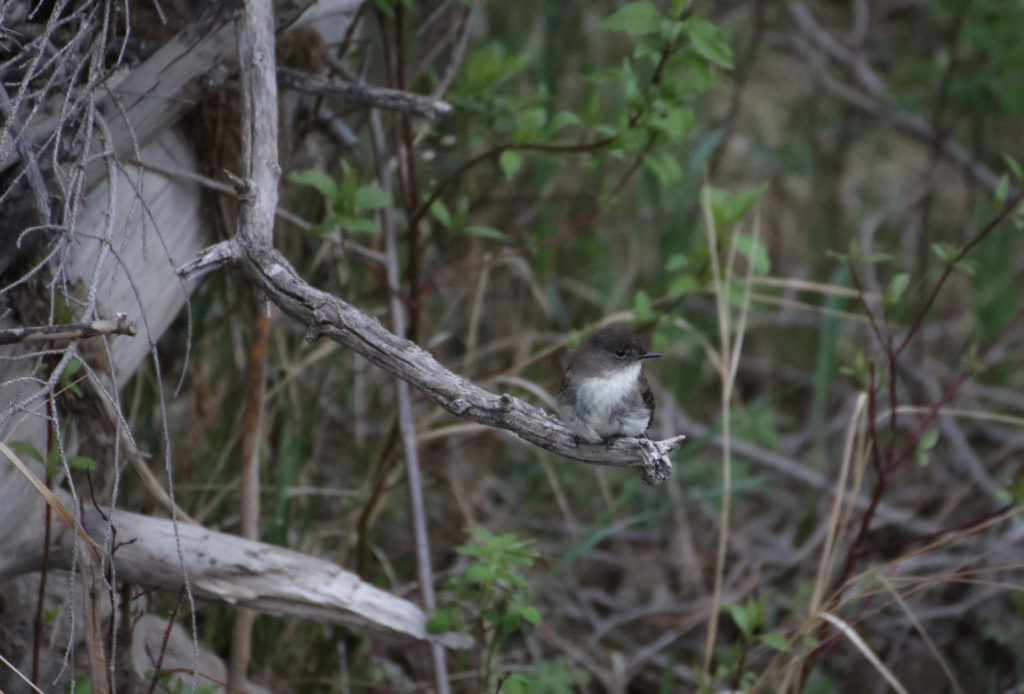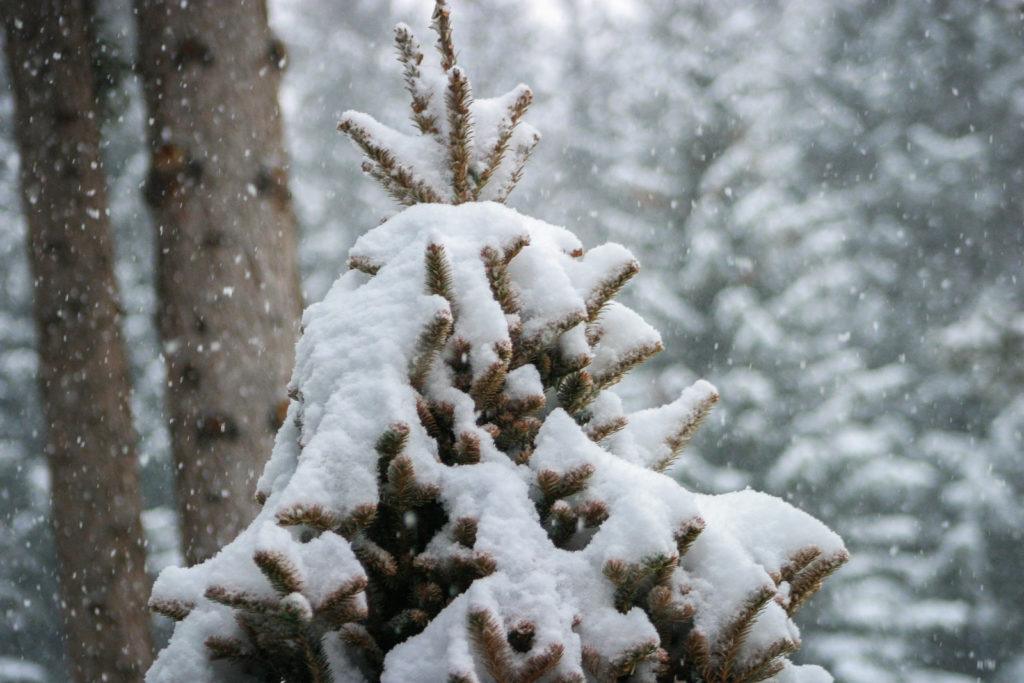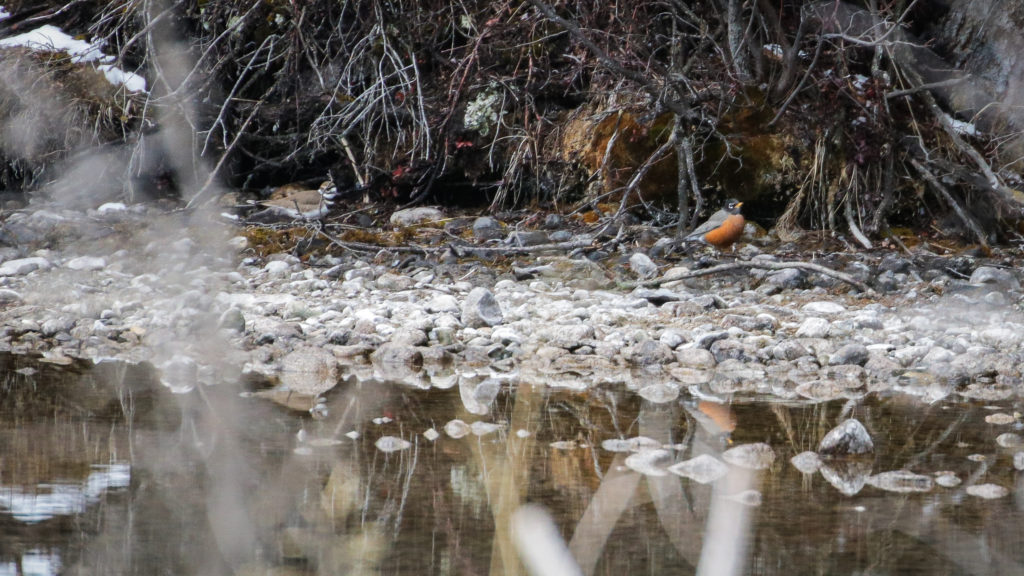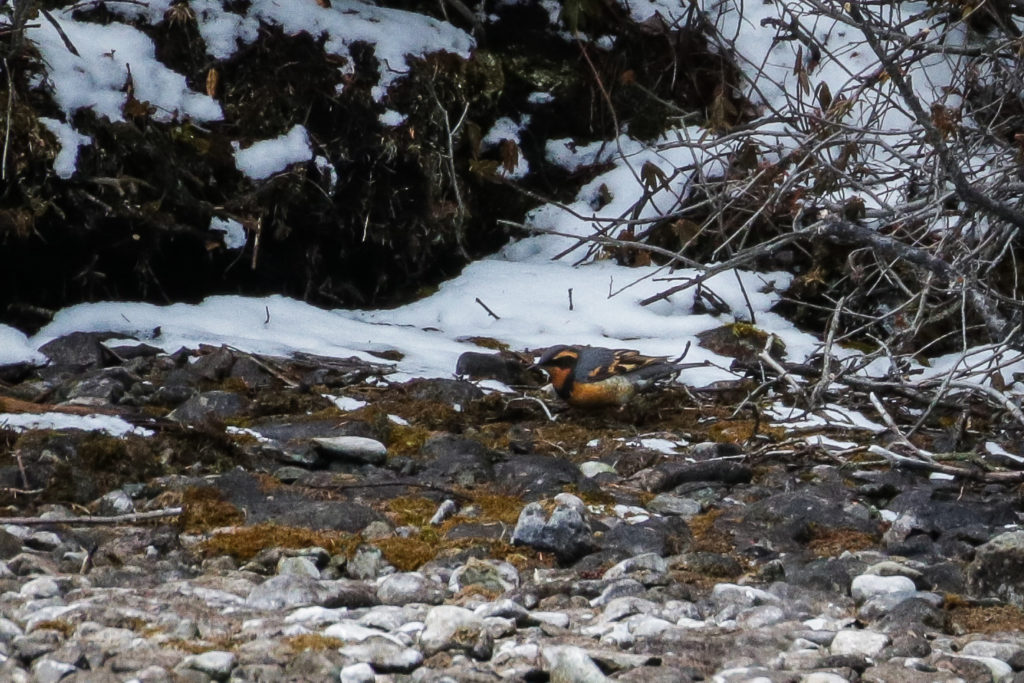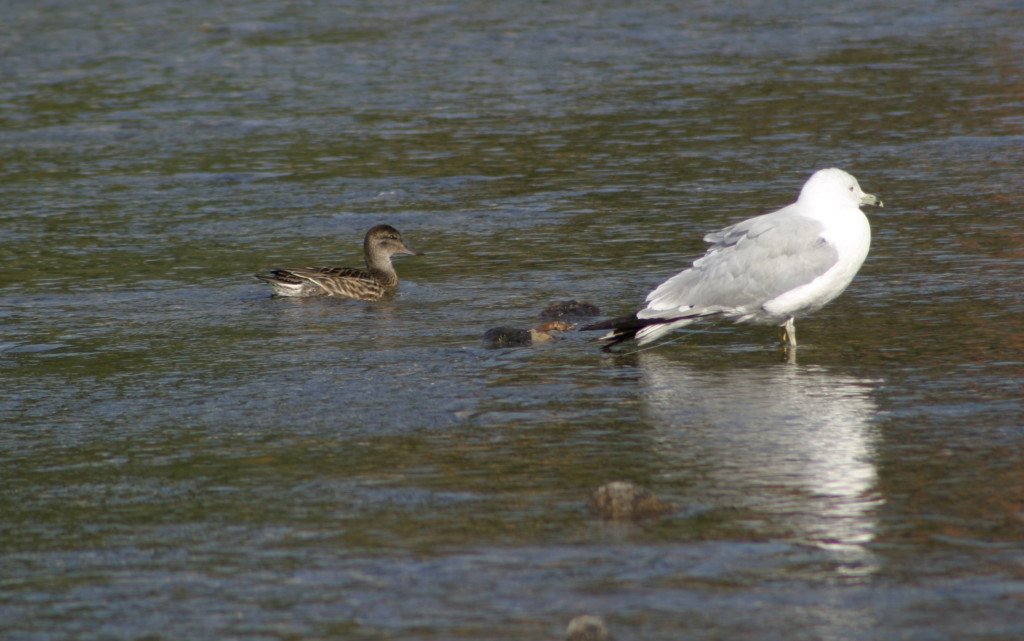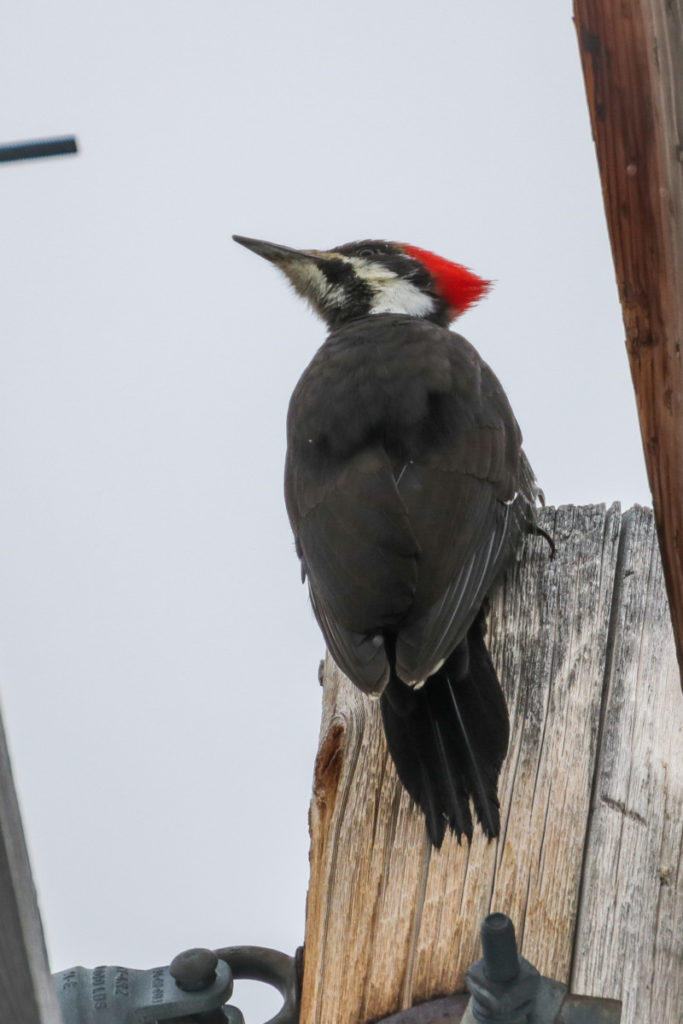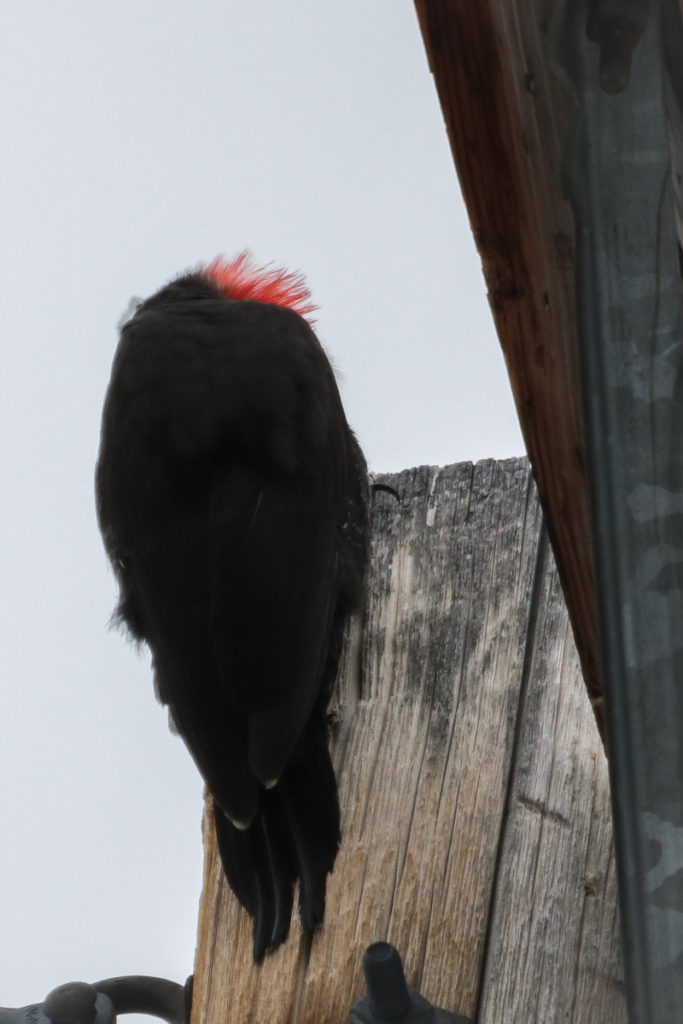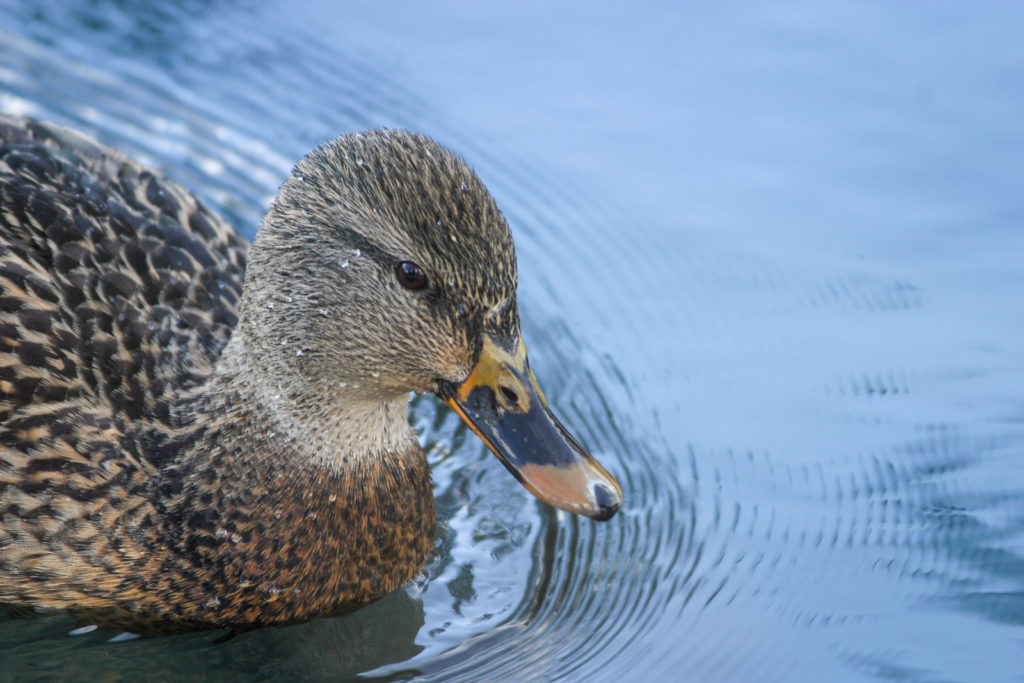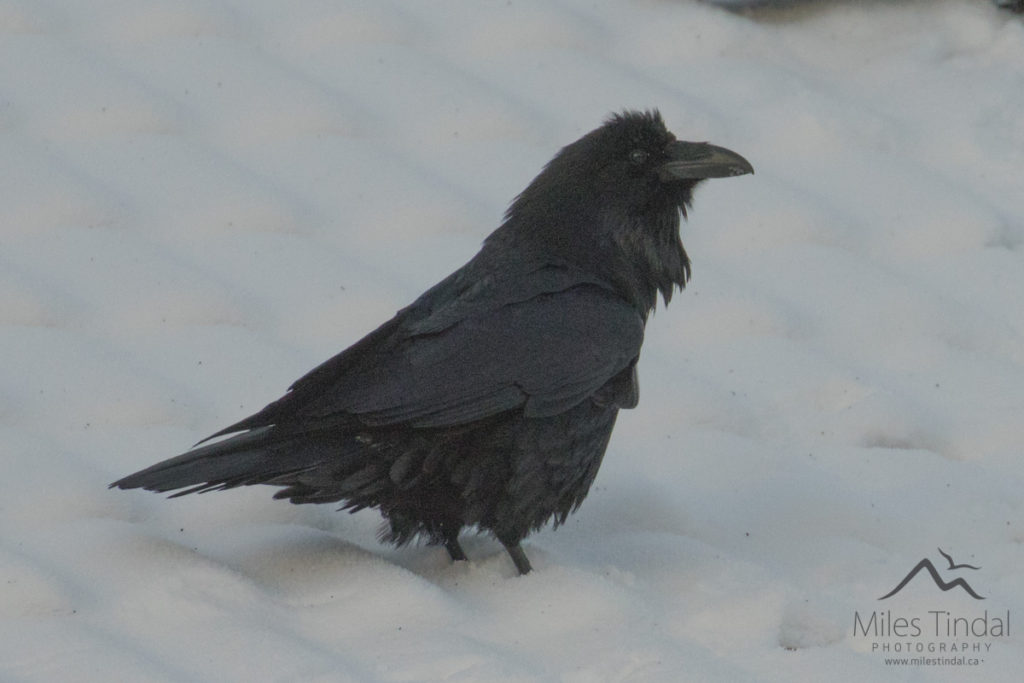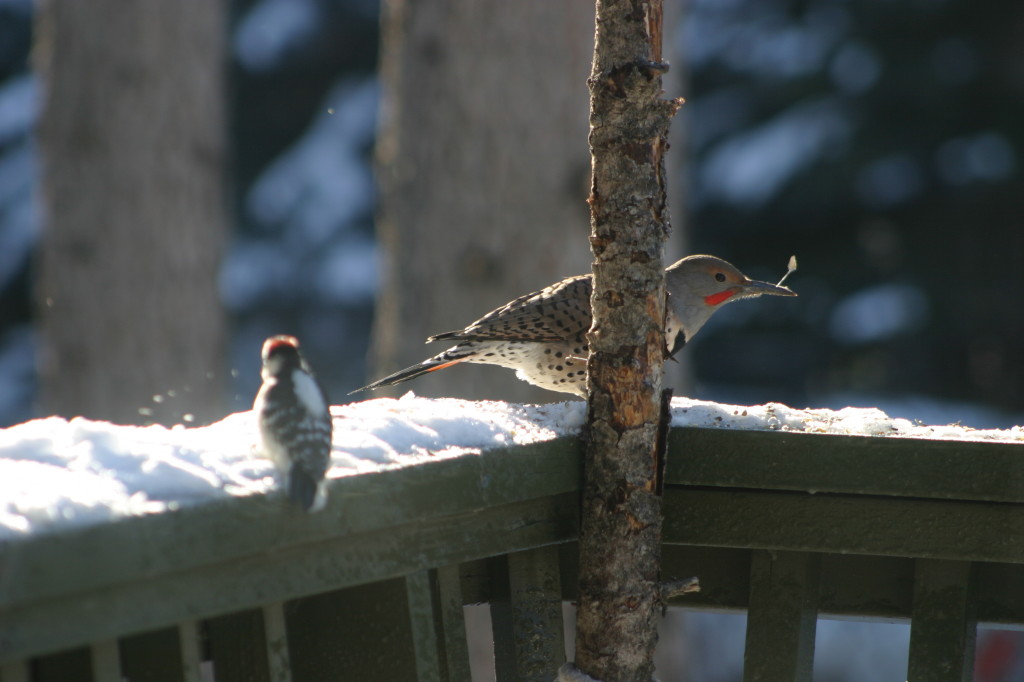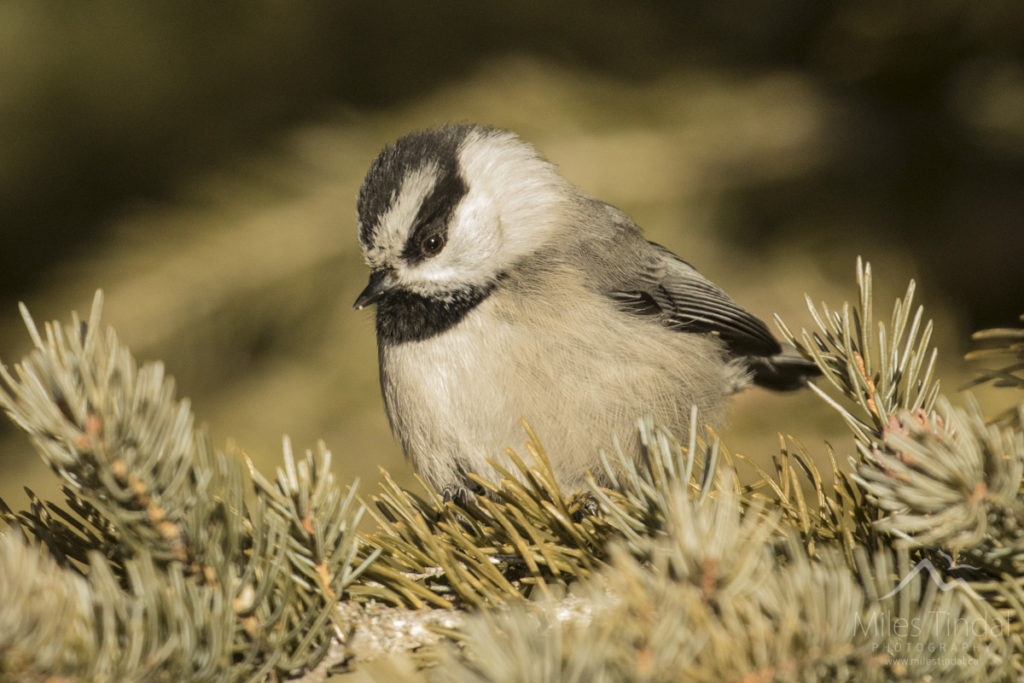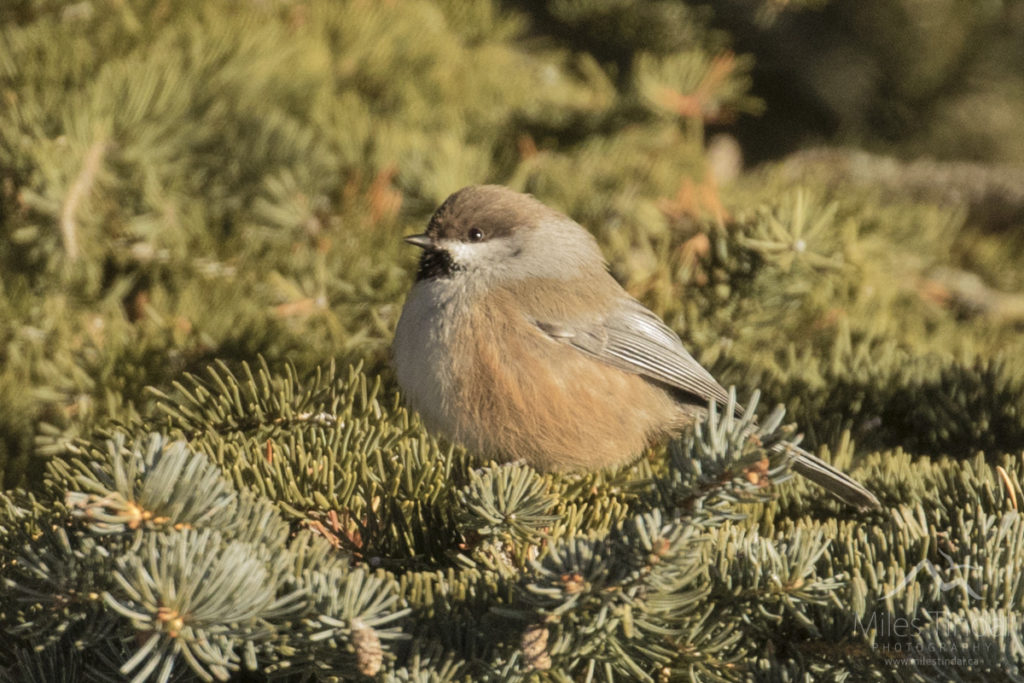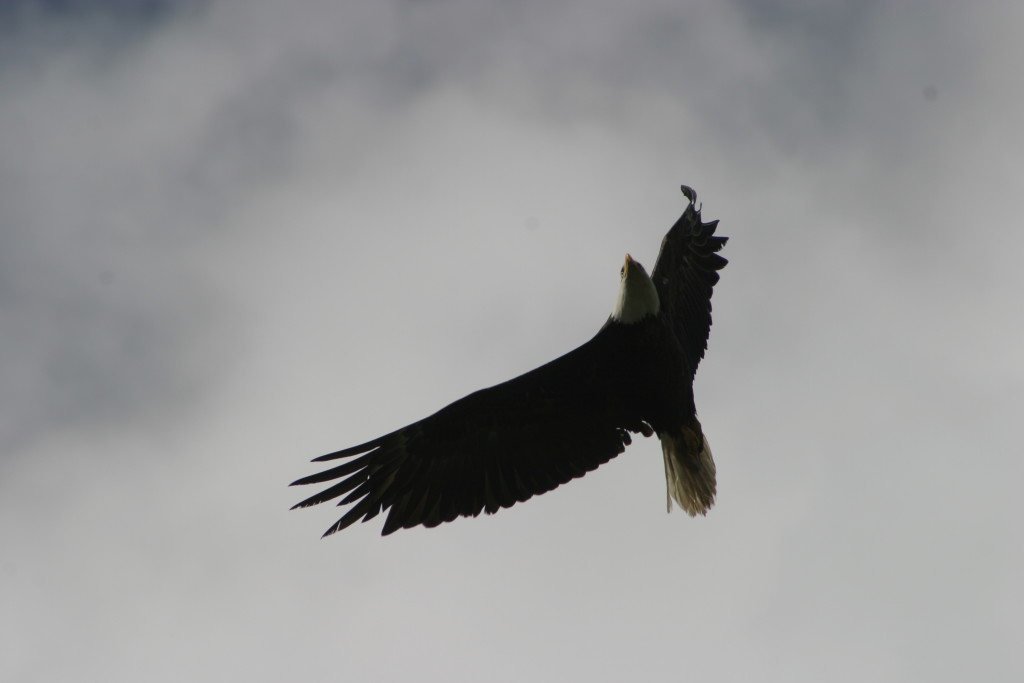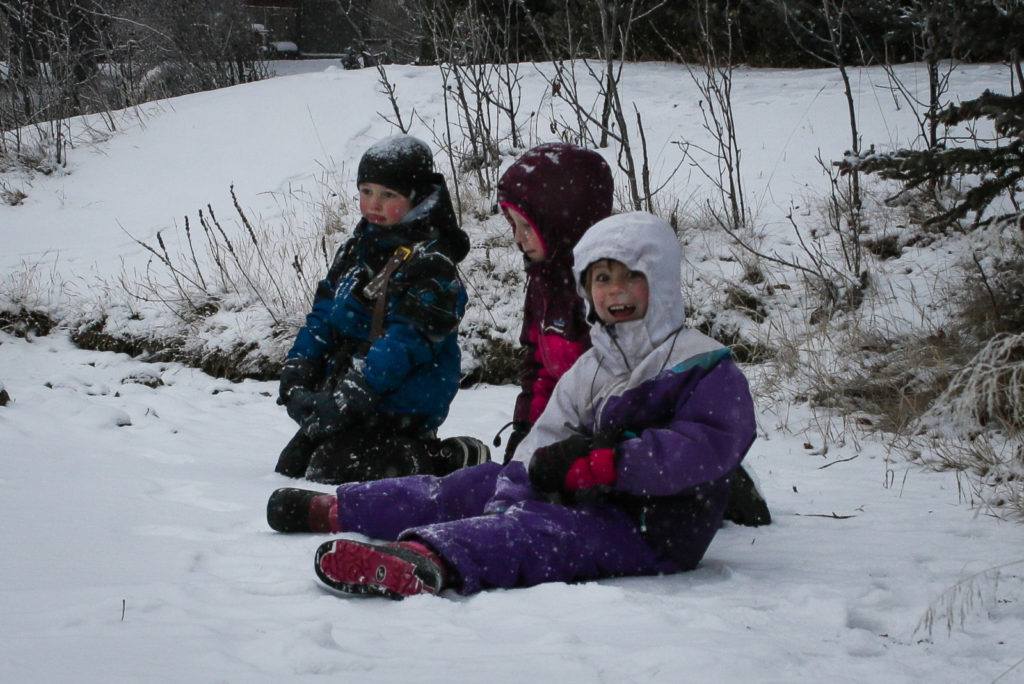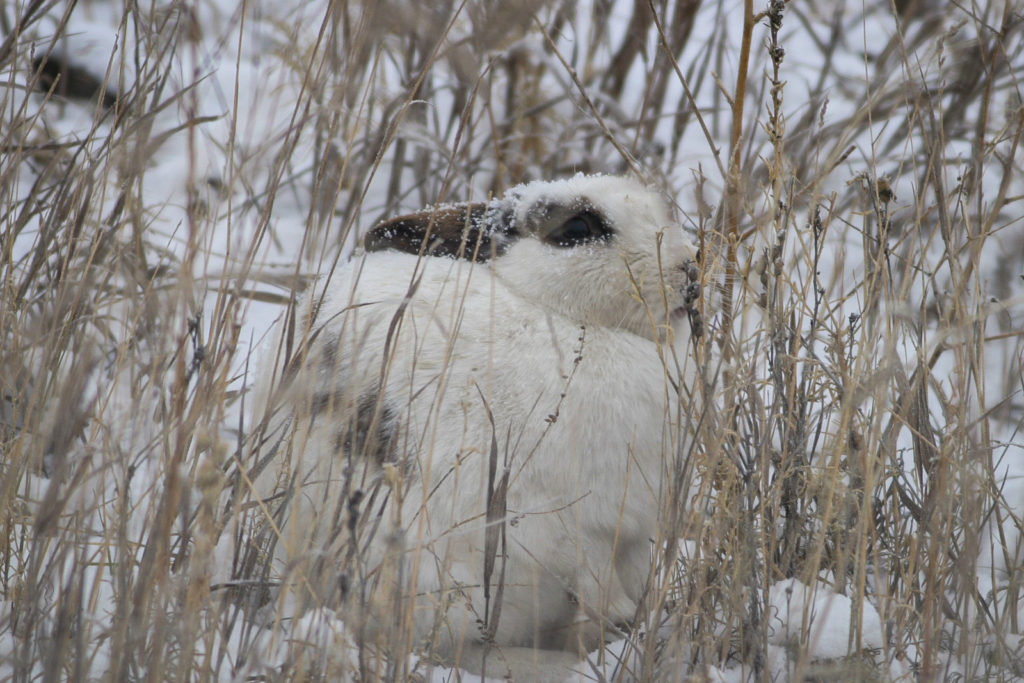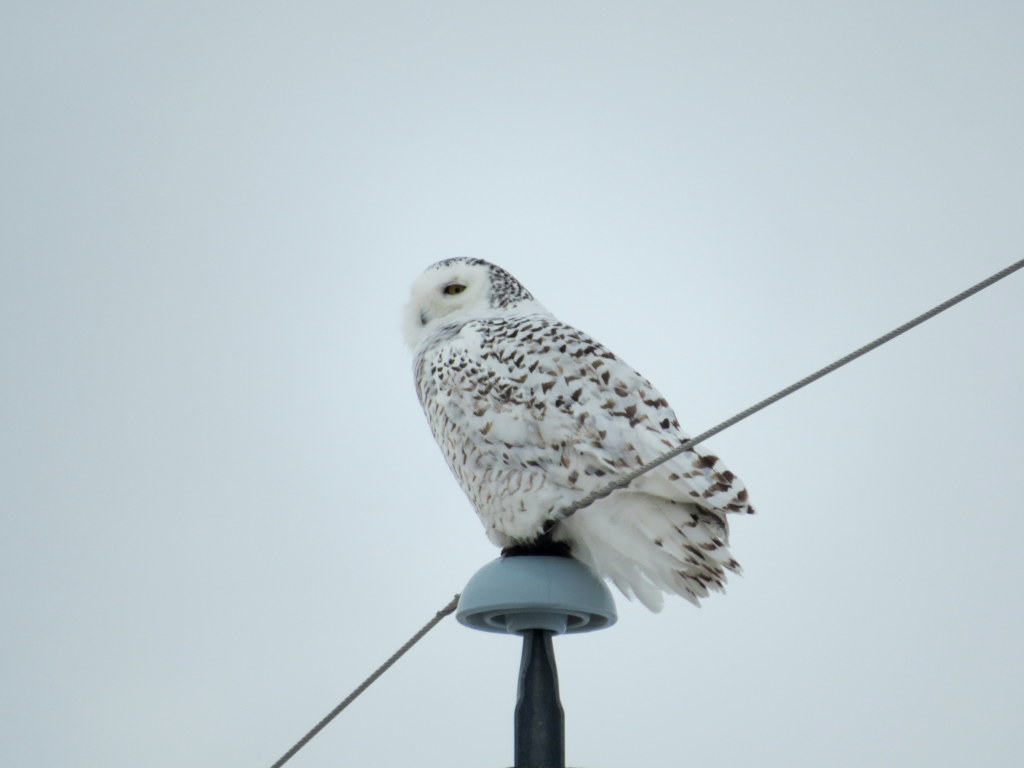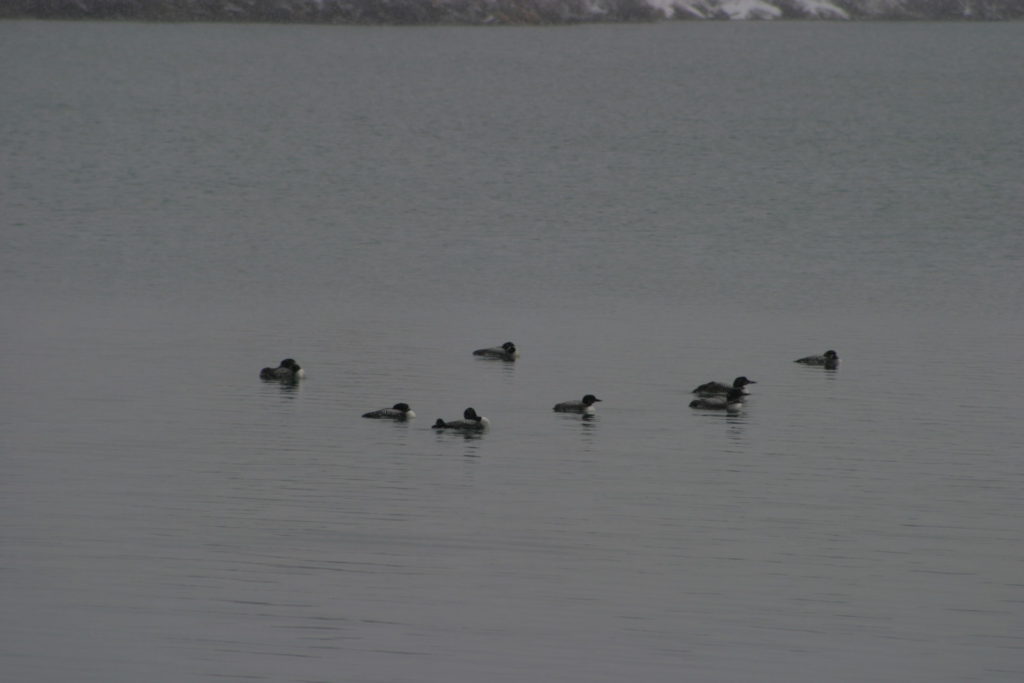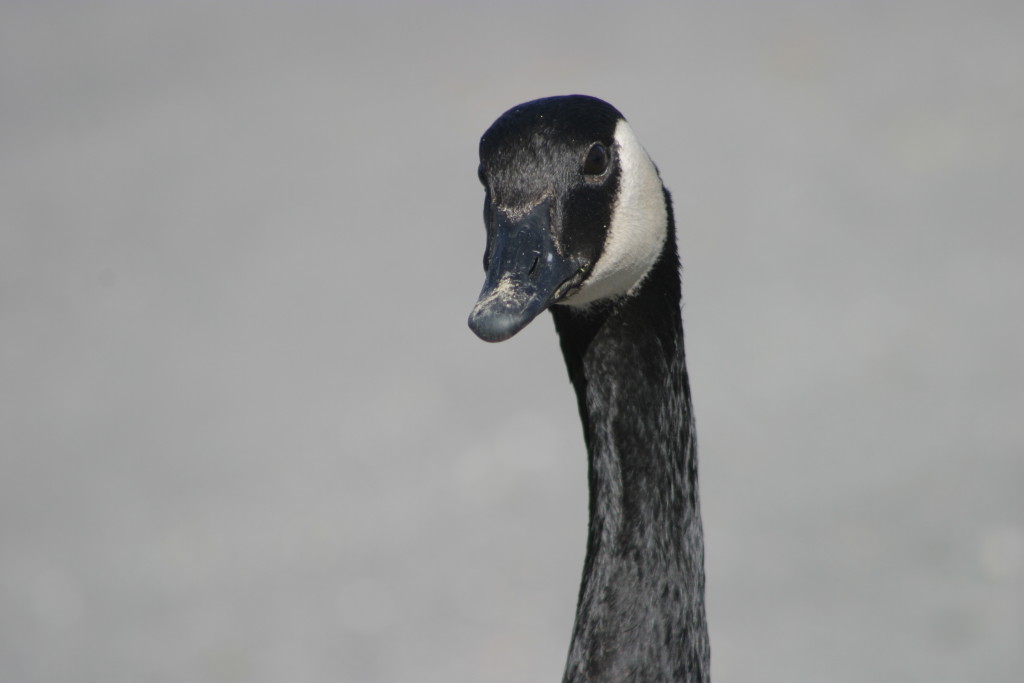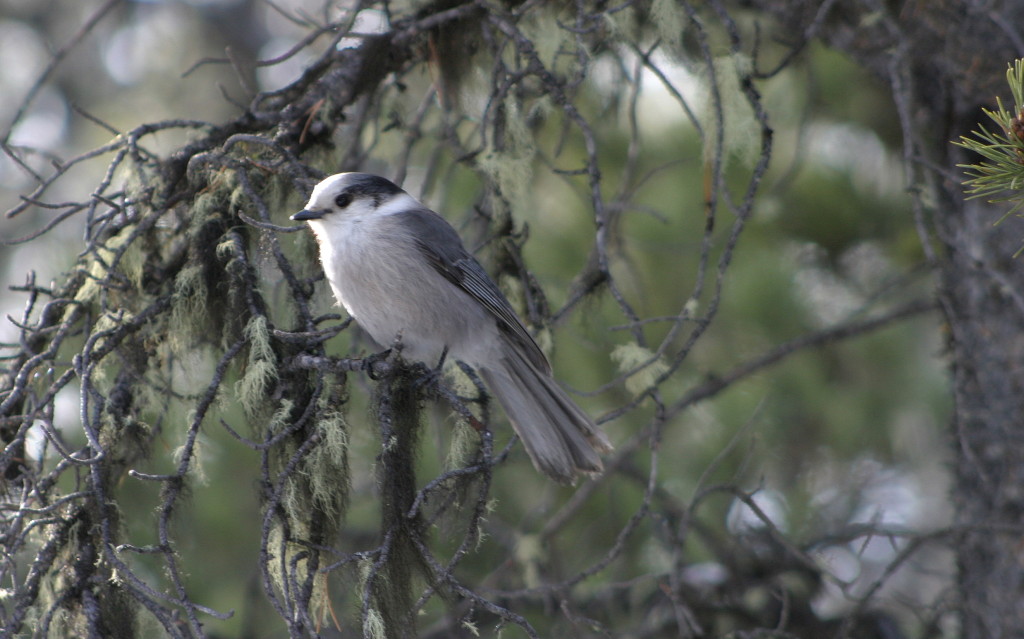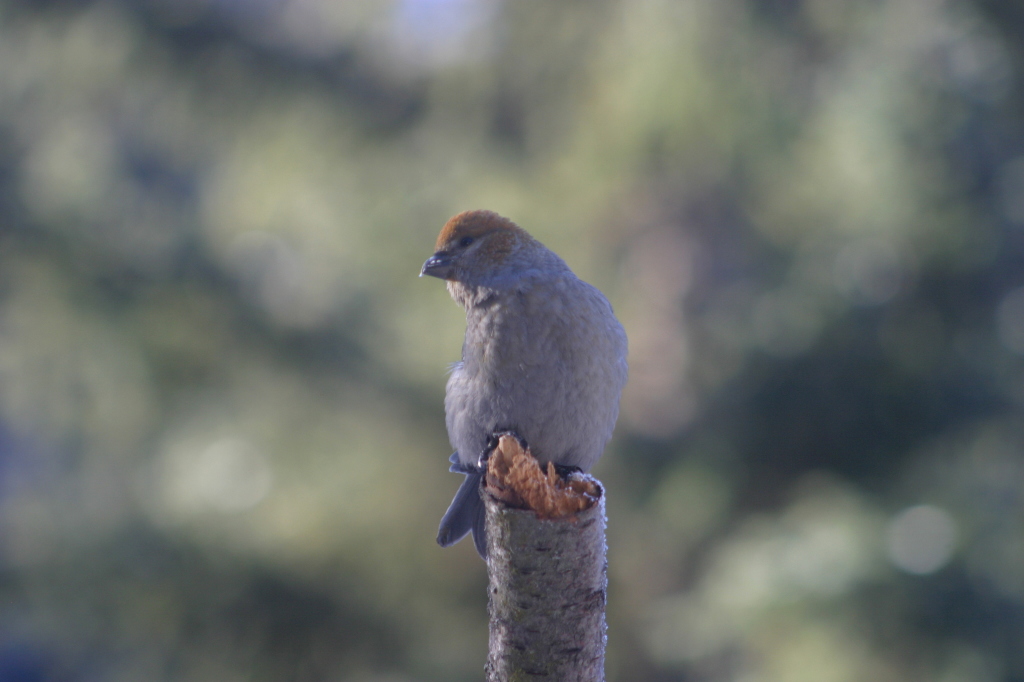The second of my bi-monthly Spring Bird Walks on Policeman’s Creek started at 7:30 AM on Sunday May 21st, the day after the second half of the Great Canadian Birdathon. The sun was long up, and the day was turning out to be pleasantly warm. 21 participants correlated with the date, and was a large enough number to split into two groups, one headed upstream to the Spurline Trail, and the other moving downstream to the Great-horned Owl nest.
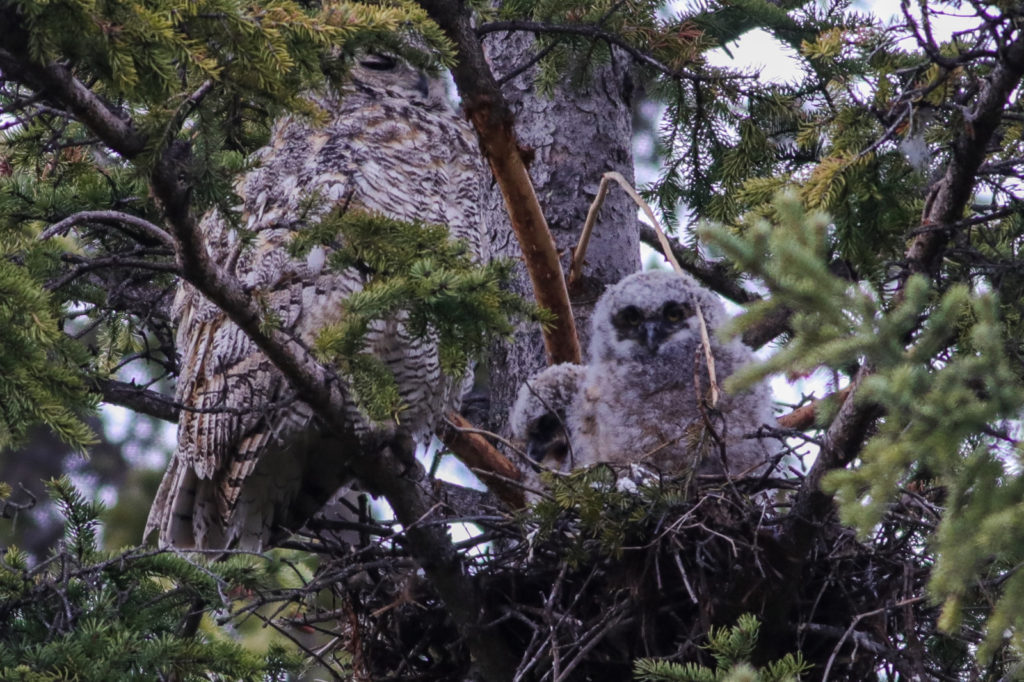
If you don’t know where it is, the nest is quite well hidden. There have been many new birds coming in since the last walk, including Spotted Sandpipers, Sora and Yellow Warblers, and between the two groups we totalled 38 species. Coming so soon after the Birdathon, I was more than a little tired, which is why my post is out so late – I slept until 9:30 today, and replacing the deck is a time consuming job. Before the walk had even started, we heard Song Sparrow, Red-winged Blackbird and White-crowned Sparrow among others, all species we would go on to see.
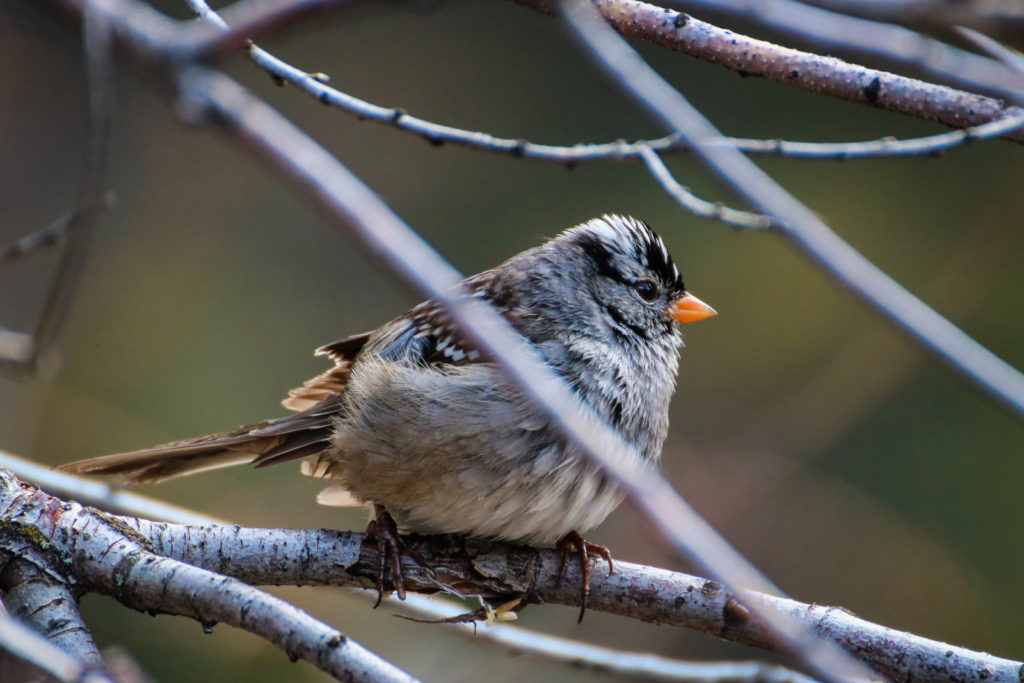
The group headed to Spurline did well, seeing three Clark’s Nutcrackers and a Solitary Sandpiper, while the downstream crew got good views of the four visible owls, Yellow Warblers, Lincoln’s Sparrows and Violet-green Swallows. Rare for the area was a pair of Common Grackles seen after most people had departed.
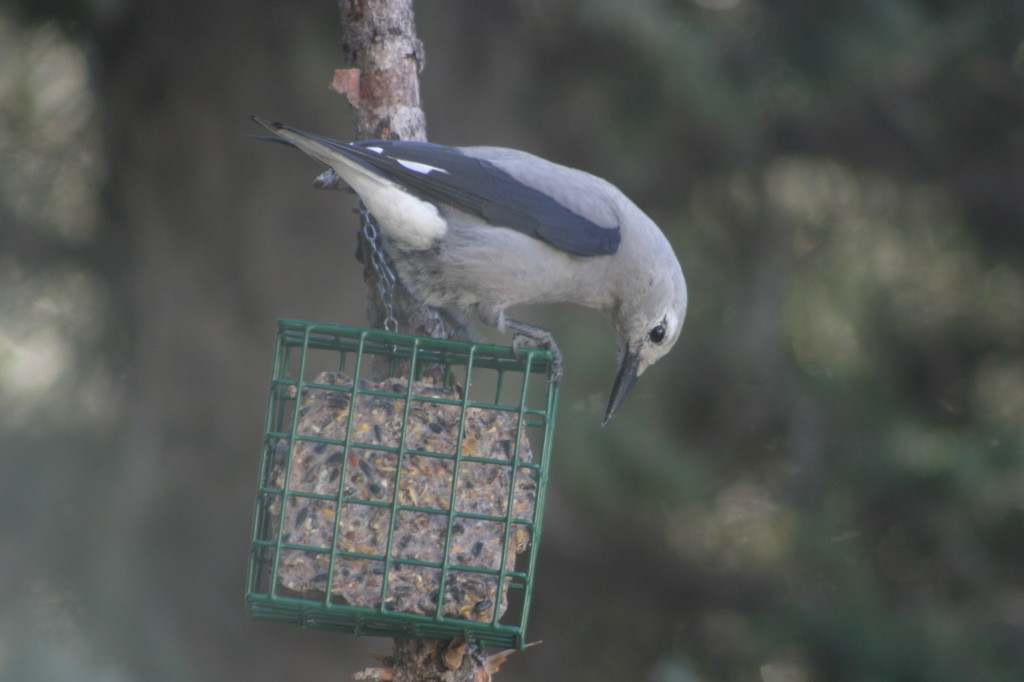
The eBird checklist is here, for anybody interested. If anyone wants to come out to our next walk, it is on June 4th at 7:30 AM (meet at 7:15) at the Big Head on Canmore’s main or 8th Street. See you then!
See previous post here: Canmore Spring Bird Walk May 7th.
